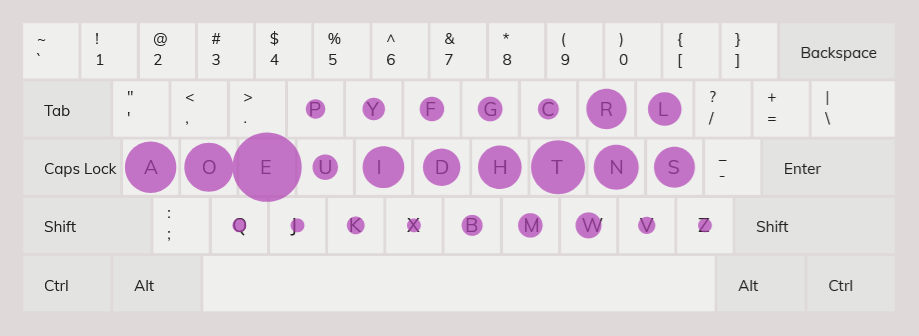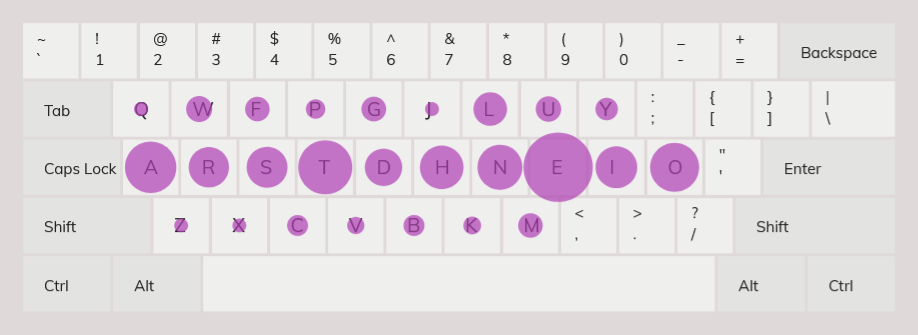Learning Colemak
Recently I switched to the Colemak-DH keyboard layout. Here I will describe that adventure: why and how I did it, and how it has turned out.
My reasons were twofold: (1) I want to avoid wrist injury, and (2) I have been increasingly annoyed at how much I twist and turn my hands with QWERTY. So I took the plunge.
1. Choosing an alternative layout
If you only know a little about keyboard layouts (like I did), you may have heard of the alternative layouts Colemak and Dvorak. You may have gotten the impression that Colemak is a QWERTY-like compromise for weenies who are too scared to commit the completely un-QWERTY-like (and therefore superior) Dvorak.
But after some research, I saw that this is false. Colemak is better than Dvorak according to many measures. For example, notice how much more even Colemak’s home row looks in the key frequency heatmaps (source):
Dvorak:

Colemak:

(See this examination of Colemak for a comparison more sophisticated than “Look how pretty the dots are!”)
There are lots of other alternatives besides these, but none is significantly better than Colemak, and Colemak has the huge advantage that the most common shortcuts are still on the left side of the keyboard, with some in the exact same place as in QWERTY.
In the end I chose the variant Colemak-DH because it incorporates an improvement from the recent Workman layout, of moving high-frequency keys out of the finger-stretching center column.
2. Practice!
After installing Colemak-DH, it was time to learn it. My favorite learning tool was typingstudy.com. keybr.com (with all keys turned on) is great too, especially for keeping track of your progress over time.
There’s not much else to say about this part. The first week is absolutely miserable, especially if you are good at QWERTY touch typing. Say goodbye to productivity and get ready to suck for a while.
After three weeks, I am up to 50 words per minute, and I expect to be back to my normal speed two months from now. More importantly, I am already feeling less strain on my wrists and less frustration from finger gyrations, as my hand is more often comfortably on the home row instead of splayed out like it’s playing Twister on hot coals while dodging bullets.
UPDATE, TWO MONTHS LATER: I am back to my normal typing speed of ~80 WPM, and thanks to my new Keyboardio Atreus, coding is now smoother because non-alphanumeric symbols are easier to reach.
Up next: a new keyboard and mouse
An improved keyboard layout is only half the story: in my next post, I will talk about my new ergonomic keyboard.
If you are a Colemak pro, you may be wondering why I’ve made no mention of EPKL and its cornucopia of extra functions through extenders—undoubtedly useful, but my new keyboard makes that largely unnecessary. All that in my next post.